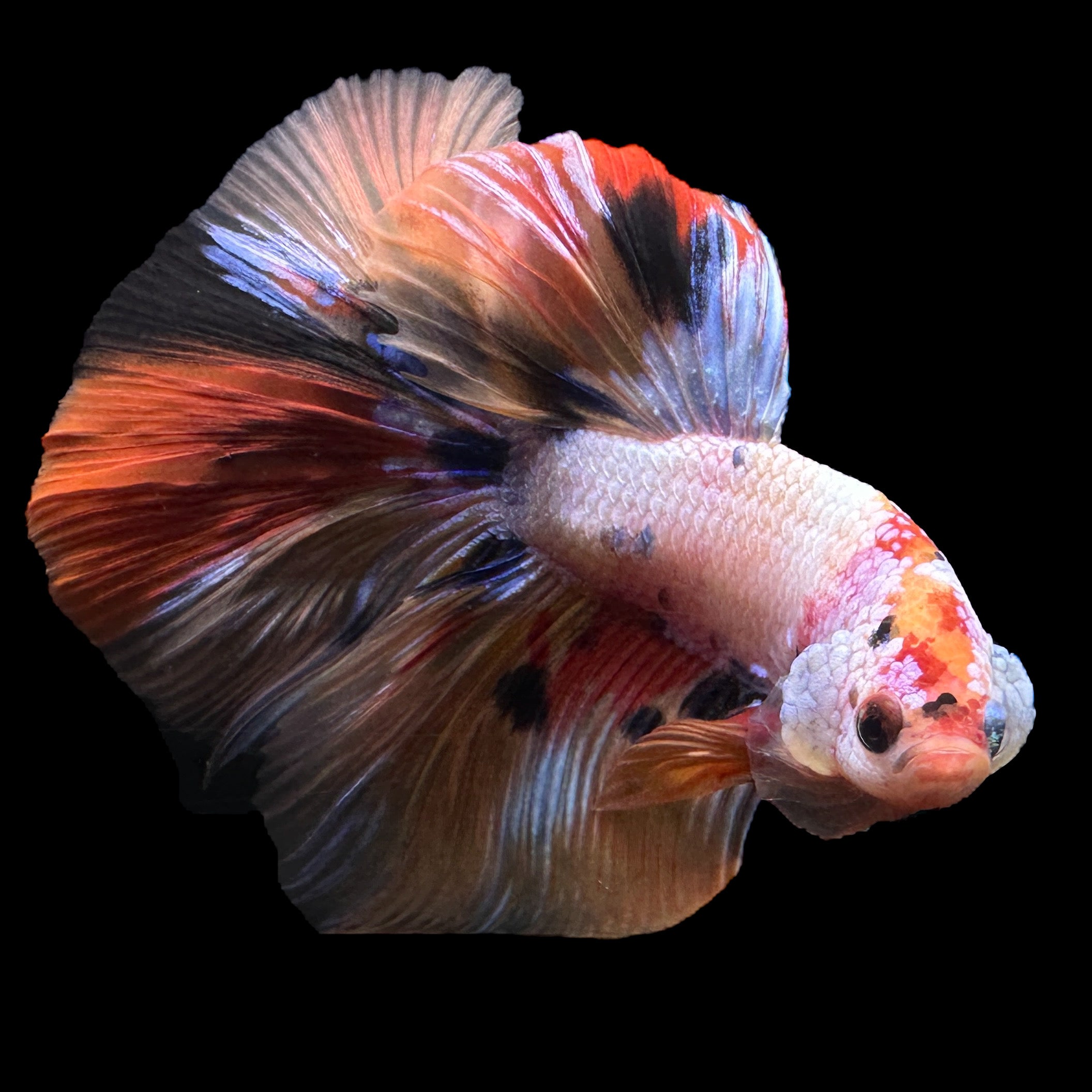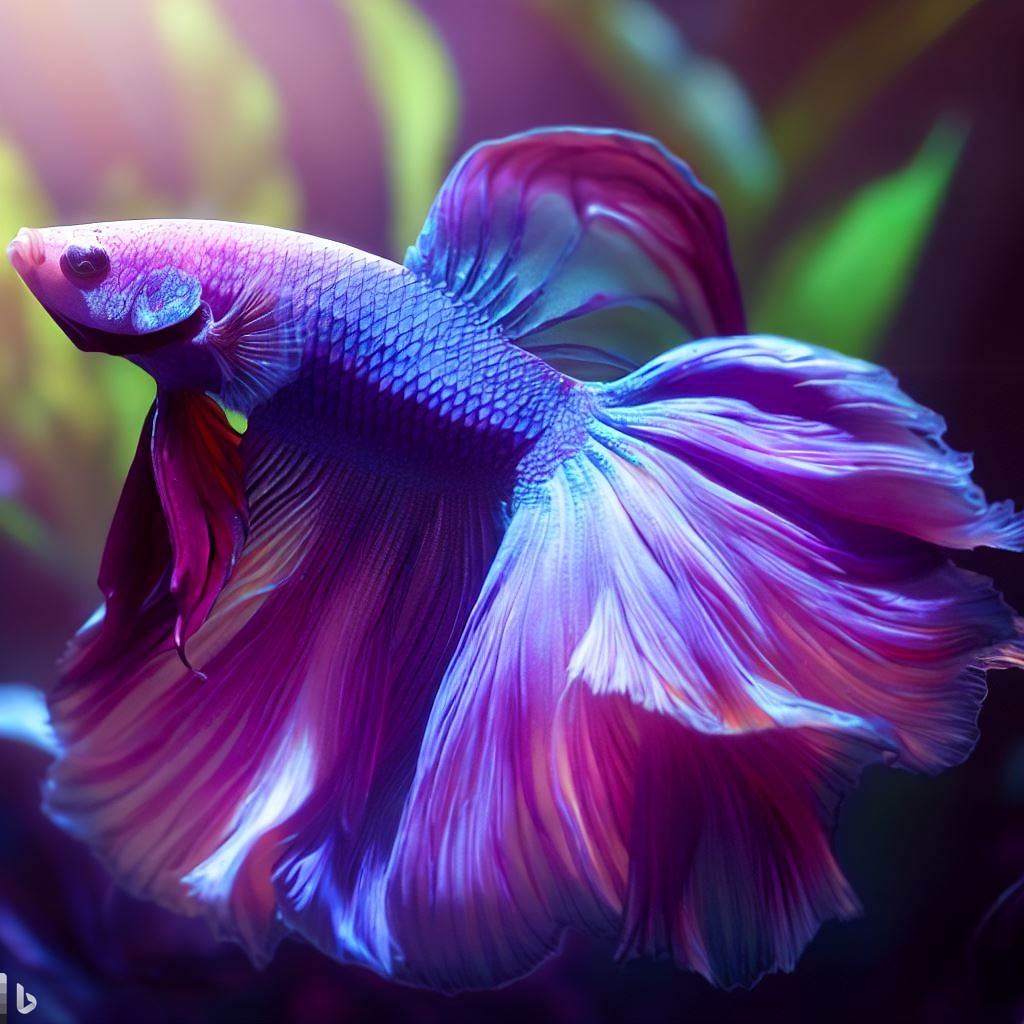How to Create the Perfect Betta Fish Habitat in your home
Everything About Betta Fish: Understanding Their One-of-a-kind Requirements, Behavior, and the most effective Practices for Ideal Care
Recognizing the distinct requirements and habits of Betta fish is crucial for any type of aquarist looking to offer ideal care. betta fish. As we explore these components better, the ramifications for both newbie and knowledgeable fish caretakers end up being progressively obvious, increasing concerns regarding exactly how finest to fit these exceptional fish in our homes.
Betta Fish Introduction
Although commonly appreciated for their lively colors and flowing fins, Betta fish, scientifically called Betta splendens, are complicated creatures that require certain like flourish. Originating from Southeast Asia, these freshwater fish are known for their territorial nature and one-of-a-kind actions. Betta fish show sex-related dimorphism, with males showing much more vivid colors and longer fins than females.
Their hostile propensities, especially amongst men, necessitate careful factor to consider when real estate them. Bettas are often maintained in single-specimen storage tanks to avoid territorial disputes. They can exist side-by-side in harmony with certain compatible varieties in bigger area storage tanks, supplied the environment meets their demands.

To ensure ideal treatment, aquarists must comprehend their distinct behavior attributes, nutritional demands, and environment demands. betta fish. With correct focus, Betta fish can exhibit their dynamic personalities and grow in a well-kept fish tank setting
Natural Environment and Setting
Betta fish prosper in a diverse variety of all-natural habitats, mainly found in the superficial waters of Southeast Asia, including rice paddies, swamps, and slow-moving streams. These environments are identified by cozy temperatures, usually between 75 ° F and 82 ° F(24 ° C and 28 ° C ), and a pH degree varying from 6.5 to 7.5, which is optimal for their health and wellness and well-being.
In their all-natural environments, Betta fish are accustomed to dense vegetation, giving both sanctuary and breeding premises. The existence of plants such as floating water lilies and thick yards not only offers defense from predators but additionally adds to the oxygenation of the water, which is crucial for their respiratory system requirements. Furthermore, these atmospheres commonly have locations of still water, allowing Betta fish to exhibit their all-natural behaviors such as bubble nesting.
Recognizing the natural environment of Betta fish is important for aquarium fanatics. Replicating these problems-- through water temperature level, pH balance, and the incorporation of live plants-- can dramatically improve the general wellness and longevity of these exciting fish, ensuring they prosper in a home fish tank setting.
Social Habits and Interactions
Comprehending the social actions and interactions of Betta fish is crucial for successful fish tank monitoring. Betta fish, or Siamese fighting fish, are understood for their unique behavioral qualities, characterized mainly why not find out more by territoriality and aggressiveness. Men, particularly, present highly aggressive habits in the direction of one another, causing the infamous credibility of Betta fish as competitors. In a constrained space, two men can participate in violent conflicts, usually leading to injury or fatality.
On the other hand, women Bettas display much less hostile actions and can exist side-by-side in groups, known as sororities, if presented correctly. why not try here It is important to check their interactions closely, as hierarchy and dominance can lead to disputes. Recognizing the dynamics within a Betta community is important; establishing hiding areas and ensuring ample area can mitigate aggressiveness.
Furthermore, Betta fish may likewise show interest and social habits towards other varieties. While they can coexist with certain non-aggressive tank mates, it is vital to select suitable varieties to avoid stress and aggressiveness. On the whole, acknowledging these social communications is crucial to promoting an unified aquarium setting for Betta fish.
Necessary Treatment Standards
Supplying proper take care of Betta fish is important to their health and health. To guarantee a thriving atmosphere, it is vital to keep optimal water problems. The water temperature need to be kept between 76 ° F and 82 ° F(24 ° C to 28 ° C), while pH levels need to range from 6.5 to 7.5. Normal water changes-- around 25% weekly-- help maintain water quality.
Betta fish need an ideal storage tank dimension; a minimum of 5 gallons is recommended to supply adequate area for swimming and hiding. Consist of decors and plants to produce a stimulating atmosphere, yet prevent sharp items that could hurt their delicate fins.

Last but recommended you read not least, make sure the container is equipped with a filter to maintain the water clean, however make use of a gentle filter to stay clear of strong currents that can emphasize the fish. By adhering to these necessary treatment standards, owners can advertise a healthy and balanced and dynamic Betta fish.
Common Health Issues and Solutions
In the care of Betta fish, recognition of common health and wellness concerns is crucial for preserving their health. One common issue is fin rot, often brought on by poor water top quality or microbial infection. Symptoms consist of torn or tarnished fins. To deal with fin rot, boost water problems and consider utilizing a broad-spectrum antibiotic.
Another usual ailment is ich, a parasitic infection defined by white areas on the fish's body (betta fish). Treatment involves enhancing water temperature level and adding fish tank salt to the tank, as this can assist remove the parasite
Swim bladder condition is likewise often observed, leading to buoyancy problems. This condition might develop from overfeeding or irregularity. A fasting duration of 24-48 hours, followed by a diet plan of blanched peas, can supply relief.
Finally, bettas may struggle with velour illness, suggested by a gold dust-like appearance on their skin. Therapy commonly calls for drug particularly developed for exterior bloodsuckers, alongside boosted tank health.
Regular tracking of water parameters, keeping a tidy environment, and providing a well balanced diet are important safety nets. By attending to these health and wellness issues immediately, Betta fish can lead healthier, a lot more vivid lives.
Conclusion
In summary, successful betta fish treatment calls for an understanding of their one-of-a-kind demands and behaviors. Offering an ideal atmosphere, consisting of suitable storage tank dimension and water problems, is vital for their well-being. Furthermore, acknowledging their territorial nature and making sure appropriate concealing areas can stop aggression. Regular tracking of health and wellness and water top quality, in addition to a balanced diet plan, adds to the longevity and vibrancy of betta fish. Following these standards will foster a thriving marine environment for these fascinating creatures.